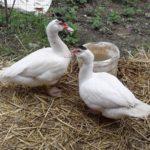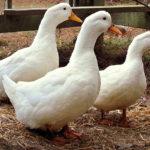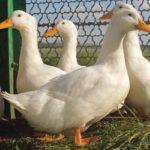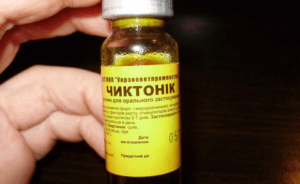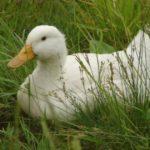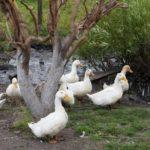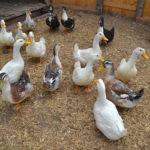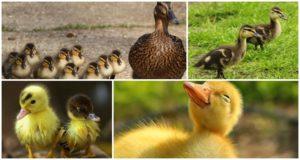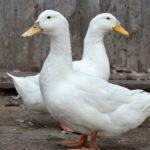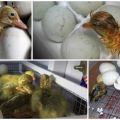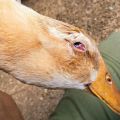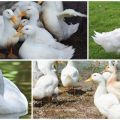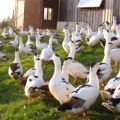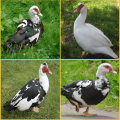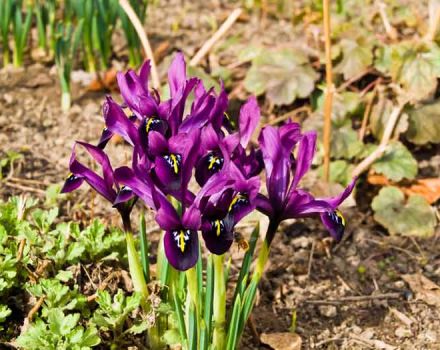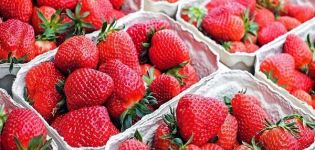Types and weight of Indo-Ducks, description and features of the white French breed
Indo-cows are a popular type of poultry, they are bred on large poultry farms and in small subsidiary farms. In our country, this type of duck appeared at the end of the 20th century, quickly spread due to its early maturity, delicious dietary meat, and impressive weight. Consider the features of cultivation of the Indo-French variety, the pros and cons of cultivation, care and possible problems.
Origin story
There is a fleshy outgrowth above the beak of the Indo-ducks, which makes the bird look like turkeys. The name of the duck also suggests a close relationship with turkey. But Indo-Ducks are not hybrids of a duck and a turkey, this conventional wisdom is a fallacy. Wild ducks, also called musky ducks (because of their special smell), with leathery growths near their beaks, are found in Central and South America. Indoor domestic breeds are derived from them. Indo-duck is grown all over the world. The first representatives were brought to Russia from Germany.
White French Indo-girls are distinguished by a snow-white feather without any shades of gray or yellow. The main feature of the breed - the absence of an obtrusive specific duck smell in meat - was liked by lovers of poultry.
Reference: Indo-duck is also called mute (Europeans are dumb) for their inability to quack loudly, make noise, like other representatives of duck.
General description and characteristics
Indoor female species are heavier than wild relatives. They have a wide chest, a short neck. The weight of an adult varies from 6 kilograms in a drake to 4 kilograms in females. The body length of males reaches 90 centimeters (females - 60 centimeters). Thanks to their short webbed legs, the Indo-women swim well and like to spend time in the water. But in the absence of reservoirs, they manage to stay in the yard, they easily tolerate land life.
The plumage is dense, some types of muscovy give good fluff. Thanks to their long wings and powerful plumage, Indo-females fly well, which can be a problem for poultry farmers. The neck is short, the beak is flat. Between the eyes and beak there is a red leathery outgrowth, which is the main distinguishing feature of Indo-Ducks. If you touch this place in adults, you will feel the slight musky smell that gave the name to the ducks.
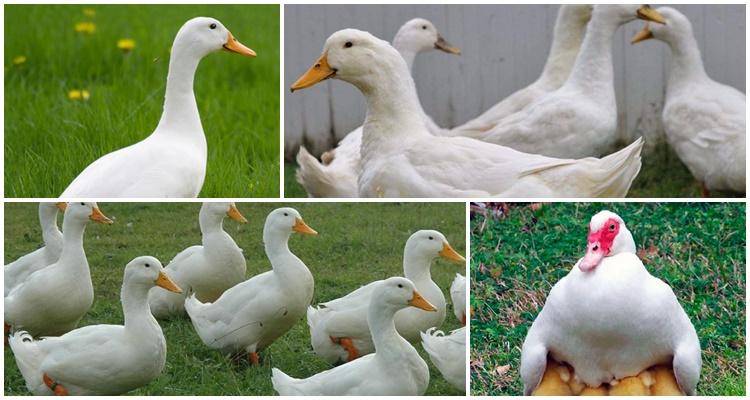
Wild individuals have a dark feather, domestic ones - of different colors, from pure white to red-brown. White Indo-Ducks are distinguished by high productivity - meat yield - 54-60% of live weight, rapid weight gain, a laying hen gives 100-120 eggs per year. Eggs with a large yolk, their weight is 70-75 grams.
Indoor varieties
Biological classification divides Indo-duck into only 2 species - wild and domestic. Wild Indo-Ducks are predominantly dark in color, body size is significantly inferior to domesticated brethren (1.5-2 kilograms).
In addition to white French, several other varieties of Indo-women have been bred, which differ in the color of their plumage. Cultural species have a phlegmatic character, they are easy to handle even for inexperienced poultry farmers.
Popular breeds also include:
- mulardy - bred by crossing musk and Peking ducks;
- red bull - ducks with red-brown feathers, one of the largest (the drake grows up to 5-7 kilograms);
- blue - has a lavender color of plumage, the down is light, delicate, the feather is an additional article of profit when breeding;
- chocolate - Indo-ducks with cinnamon feathers and white down, as a result, each bird has an individual color.
There is no particular difference in content and character between the breeds, the meat of all is juicy and tender, the differences relate to appearance.
Advantages and disadvantages
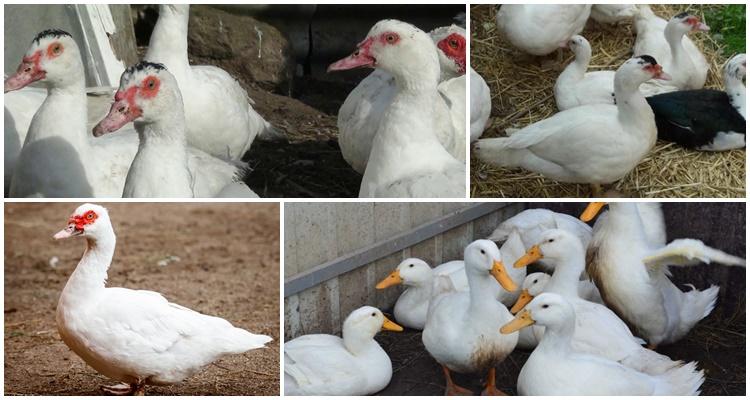
White Indo-women do not have special requirements for keeping, they rush for a long time, which allows them to get offspring twice a year. Keeping Indo-Ducks does not cause much trouble for the owners, the breeds have more advantages than disadvantages.
How to keep and care for a bird
What conditions need to be created for white Indoor women in order to ensure full development:
- Families are formed from 1 drake and 4-5 layers. Females are one month younger than males. If there are many birds, they are settled in separate families.
- Nests for incubation are made from boxes or branches. Laying hens and ducks are separated at the head.
- The population density is 3 birds per square meter of area, ducklings - 8 heads.
- It is better to make the floor in the poultry house mesh with cells of 24 millimeters, covering 2/3 of the area of the room.
- Muscovy ducks can do without a pond. A large basin of water is placed in the house so that the bird can wet the plumage and wash the beak.
- Indoor women fly well, so a mesh fence is made on the sides and on top. When kept in the yard, the bird's wings are cut (tubular feathers ½ the length).
- Conditions of detention. The bird does not tolerate dampness, musty humid air. Ventilation is done in the poultry house, windows, in the warm season they give the birds a walk.
- When the enclosure is kept, the territory is zoned - feeders in one place, a place for walking separately. For muscovy ducks, roosts are made, sleeping beds that resemble trees in the wild.
- The recommended temperature is 16-20 °, if it falls below 16 °, the females stop rushing. It is recommended to light the house at 16-18 hours.
- After feeding, the containers are freed of food leftovers - musk ducks do not like dirt.Change the litter regularly (large sawdust is ideal).
- Incubation takes place in the spring. During the season, an Indo-duck can breed ducklings twice. Females have a developed maternal instinct, if the eggs are not removed for 2-3 weeks, the duck will sit on the clutch.
- Newborn ducklings are fed 5-8 times a day. They start with eggs, then add cottage cheese. After a week, you can give the usual set of feed, pre-chopped.
- When walking, the bird likes to peck on shiny small objects (glass, nails), so you need to keep the yard clean.
Slaughter of poultry is recommended no later than 12 weeks of age to avoid hemp when plucking.
Drawing up a diet
White muscovy ducks are not too demanding on the diet, they are omnivorous. So that the immune system does not suffer, and the youngsters gain weight quickly, the diet must be balanced. Ducklings and adults are fed the same food, for young animals the food is crushed (fed 5 times). The diet includes:
- grain, bran - wheat, oats, corn, barley;
- green forage - grass up to 10% of the total amount of forage (including foliage, tops);
- root vegetables - chopped beets, carrots, boiled potatoes;
- meat and fish waste, river molluscs;
- synthetic vitamins, premixes.

If the ducks do not walk, the grass is cut and given in one of the feedings. Indo-women are good at eating waste from the kitchen - cleaning, leftovers from ready-made meals, pieces of fruits and vegetables. While walking, they eat small insects. If the bird does not walk, does not swim in the pond, it is important to include bone meal in the diet to provide protein and amino acids of animal origin.
The bird is fed 3 times a day, preferably according to the regimen. Clean water must be readily available.
Breeding rules and profitability
Raising white muscovy ducks with the right organization of the economy is a profitable business. The demand for dietary red meat remains consistently high, the market is not full. The carcasses of the white French Indoor have a pleasant presentation - there are no dark spots on the skin from a dyed feather, the skin is light in color. What novice poultry farmers need to know:
- There is little demand for duck eggs.
- With seasonal housing, there is no need for warm houses, which reduces costs. In 2 months, the ducklings will reach their maximum size, they can be realized, having received a profit that is 2 times higher than the costs.
- With constant breeding, you will have to spend money on the poultry house. Additional income is usually not provided by eggs, but by the sale of ducklings. With the independent construction of premises, feeders, the costs will quickly pay off. If you buy an incubator, you can buy eggs from other farms, receive income from the sale of chickens.
Before starting breeding, you need to study the possibilities of implementation, the peculiarities of the local market in order to draw up a competent business plan, taking into account all the features of the economy.
Reference: farms for breeding Indoor for meat have an average profitability of 70%.
Possible diseases
Muscovy ducks are distinguished by strong immunity, they rarely get sick. Among the most common diseases are:
- parasites (downy eaters);
- problems of the digestive tract - goiter catarrh, cloacitis;
- infectious diseases - salmonellosis, aspergillosis (fungal), viral hepatitis, bird flu;
- loss of plumage.
Vaccinations, compliance with conditions of detention reduce the risk of developing diseases. In the warm season, Indo-Ducks are transferred to the street - the sun, fresh grass strengthen the immune system, support the health of young and adult birds. When kept in a poultry house, temperature and light conditions are observed, cleanliness and humidity are monitored.
White Indo-women produce high quality meat, it is not difficult to care for them. By starting with a few heads and mastering the rules of growing, you can build a profitable business. Indo-ducks grow quickly, are distinguished by excellent health, meat is in demand on the market.
